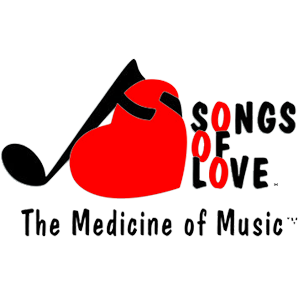Seeds of Hope®
Family Resources
Medical Resources
![]()
U.S. National Library of Medicine National Institutes of Health
U.S. National Library of Medicine
National Institutes of Health
8600 Rockville Pike
Bethesda, MD 20894
(888) FIND-NLM
(888) 346-3656
(301) 594-5983 (local/international calls)
http://www.clinicaltrials.gov/ct/gui
Email: custserv@nlm.nih.gov
ClinicalTrials.gov provides information on clinical trials for a wide range of diseases and conditions. The U.S. National Institutes of Health (NIH), through its National Library of Medicine (NLM), has developed this site in close and ongoing collaboration with all NIH Institutes and the Food and Drug Administration (FDA).
As a result of the FDA Modernization Act, it was required of the Dept. of Health and Human Services, through the NIH, to establish a registry of clinical trials for both privately and federally funded trials of experimental treatments for serious and life-threatening diseases or conditions.
Clinical Trials and Noteworthy Treatments for Brain Tumors
The Musella Foundation For Brain Tumor Research is a 501(c)3 non- profit organization dedicated to improving the quality of life and survival times for brain tumor patients by using computer technology to index brain tumor clinical trials, streamline the flow of information, organize the brain tumor community and raise money for brain tumor research.
http://www.virtualtrials.com/
Definitions
Albumin (Alb)
Usually used to screen for liver disorder, kidney disease or to evaluate nutritional status. Since albumin is low in many different diseases and disorders, albumin testing is used in a variety of settings to help diagnose disease, monitor changes in health status with treatment or with disease progression, and as a screen that may serve as an indicator for other kinds of testing.
ALP (Alkaline phosphatase)
This test is used to screen for a liver or bone disorder and to monitor treatment. A high ALP usually means that the bone or liver has been damaged.
ALT (Alanine aminotransferase)
Used to screen for liver damage. ALT values are compared to the levels of ALP and AST to determine which form of liver disease is present.
AST (Aspartate aminotransferase)
Used to detect liver damage. AST values are comared to the levels of the other liver enzymes to determine which form of liver disease is present.
Bilirubin
A waste product of the liver, it is measured to diagnose and/or monitor liver diseases. When bilirubin levels are high, a condition called jaundice occurs, and further testing is needed to determine the cause. Too much bilirubin may mean that too much is being produced (usually due to increased destruction of red blood cells hemolysis) or that the liver is incapable of adequately removing bilirubin in a timely manner due to blockage of bile ducts, liver diseases (such as cirrhosis, acute hepatitis), or inherited problems with bilirubin handling).
Blood Urea Nitrogen (BUN)
This test in primarily used, along with the creatinine test, to evaluate kidney function. Increased BUN levels may indicate impaired kidney function due to a variety of conditions. Low levels are not common and are usually not a cause for concern.
Calcium (Ca)
Used to determine if there is a nomal level of calcium circulating in the blood (not in the bones). A normal calcium result with other normal lab results means no problems with calcium use by the body. This test can be used to screen for, diagnose, and monitor a range of conditions relating to the bones, heart, nerves, kidneys and teeth. Calcium is monitored as part of regular lab tests with certain kinds of cancer. Hypercalcemia is too much calcium in the blood and hypocalcemia is low calcium. Because about half of the calcium in your blood is bound by albumin, these 2 tests are usually ordered together. As albumin levels rise, calcium rises as well, and vice versa.
CO2 (Carbon Dioxide)
Part of electrolyte panel. Helps to evaluate acid-base balance. It is used in conjuction with other tests in order to determine a respiratory or metabolic imbalance. When CO2 levels are higher or lower than normal, it suggests that your body is having trouble maintaining its acid-base balance or that you have upset your electrolyte balance, perhaps by losing or retaining fluid.
Chloride (Cl)
Part of electrolyte panel. Some of these tests may be ordered at regular intervals when a patient has a disease or condition or is taking a medication that can cause an electrolyte imbalance. Increased levels of chloride (called hyperchloremia) usually indicate dehydration, but can also occur with any other problem that causes high blood sodium. Hyperchloremia also occurs when too much base is lost from the body (producing metabolic acidosis), or when a person hyperventilates (causing respiratory alkalosis). Decreased levels of chloride (called hypochloremia) occur with any disorder that causes low blood sodium. Hypochloremia also occurs with prolonged vomiting or gastric suction, chronic diarrhea, emphysema, or other chronic lung disease (causing respiratory acidosis), and with loss of acid from the body (called metabolic alkalosis).
Complete Metabolic Panel (CMP)
A CMP is composed of 14 specific tests that provide information about blood sugar and blood proteins, electrolyte and acid/base balance, and the liver and kidneys.
Creatinine (Cr)
This test is used, along with the BUN test, to assess kidney function. Increased creatinine levels in the blood suggest diseases or conditions that affect kidney function. Low levels of creatinine are not common and are not usually a cause for concern.
Glucose (blood sugar)
Used to measure the amount of glucose in the blood at the time of sample collection. It is used to detect both hypoglycemia and hyperglycemia and may be measured on a fasting basis or randomly.
Hematocrit (HCT)
This test measures the amount of space (volume) red blood cells occupy in the blood. The value is given as a percentage of red blood cells in a volume of blood.
Hemoglobin (Hgb)
Hemoglobin carries oxygen and gives the blood cell its red color. The hemoglobin test measures the amount of hemoglobin in blood and is a good indication of the blood's ability to carry oxygen throughout the body.
Platelet (thrombocyte) Count
Platelets (thrombocytes) are the smallest type of blood cell and play a major role in blood clotting. Increases and decreases can point to abnormal conditions of excess bleeding or clotting. Mean platelet volume (MPV) is a machine calculated measurement of the average size of platelets. New platelets are larger and the MPV can give a doctor information about platelet production in the bone marrow.
Potassium (K)
Part of electrolyte panel. Potassium testing can detect concentrations that are too high (hyperkalemia) or too low (hypokalemia). These results may indicate certain health conditions or be the cause of taking certain medications.
Red Blood Cell (RBC)
A RBC count shows the number of red blood cells in a sample of blood. Red blood cells carry oxygen from the lungs to the rest of the body. They also help carry carbon dioxide back to the lungs so it can be exhaled.
Red Blood Cell indices.
These numbers help in the diagnosis of different types of anemia:
- Mean Corpuscular Volume (MCV): Shows the size of the red blood cells
- Mean Corpuscular Hemoglobin (MCH): Calculation of the amount of hemoglobin in an average red blood cell.
- Mean Corpuscular Hemoglobin Concentration (MCHC): The concentration of hemoglobin inside an average red blood cell
- Red Cell Distribution Width (RDW): The RDW reports whether all the red cells are about the same width, size, and shape. This helps further classify the types of anemia.
Sodium (Na)
Part of electrolyte panel. Blood sodium testing is used to detect low sodium (hyponatremia) or high sodium (hypernatremia) usually associated with edema, dehydration or other diseases.
Total Protein (TP)
Usually ordered to provide general information about nutritional status or investigate the cause of edema (fluid in tissue).
White Blood Cell (WBC)
A WBC count is the number of white blood cells in a sample of blood. White blood cells protect the body against infection. The number of white blood cells is sometimes used to identify an infection or to monitor the body's response to cancer treatment.
White Blood Cell Types (WBC differential)
There are five major kinds of white blood cells: neutrophils, lymphocytes, monocytes, eosinophils, and basophils. Immature neutrophils, called band neutrophils, are also included and counted as part of this test. Each type of cell plays a different role in protecting the body. The numbers of each one of these types of white blood cells give important information about the immune system. An increase or decrease in the numbers of the different types of white blood cells can help identify infection, an allergic or toxic reaction to certain medications or chemicals, and many conditions (such as leukemia).
Sources of Comfort
Angel Flight WestAngel Flight West arranges free air transportation in response to health care and other compelling human needs. | |
 | Camp SunshineCamp Sunshine enriches the lives of children with cancer and their families through recreational, educational and support programs allowing them to share similar experiences and to participate in activities that promote normal childhood development as they cope with the challenges of childhood cancer. Camp Sunshine's recreational, educational and support programs provide opportunities that promote individual growth and self-confidence, peer support through friendships with others experiencing similar challenges, and normal life experiences for children with cancer and their families. These activities promote and enhance normal childhood development and help children cope with the challenges of cancer. |
 | Chemo AngelsChemo Angels is a volunteer organization dedicated to adding a ray of sunshine to the lives of those undergoing IV chemo treatment. We believe people going through the physical, emotional and mental rigors of chemotherapy deserve some encouragement. Many of our Chemo Angel volunteers are cancer survivors themselves, or people whose lives have been affected by cancer in some way. Our common denominator is a desire to brighten the lives of cancer patients while they are going through this challenging time. Chemo Angels is a program dedicated to supporting people with cancer. In addition to providing helpful information and cancer related resources, we match patients who are going through the difficult time of chemotherapy with "Angels". The function of these Angels is - through little notes, cards and occasional small gifts - to bring a bit of cheer and encouragement. |
Flashes of HopeFlashes of Hope is a non-profit organization dedicated to creating uplifting portraits of children fighting cancer and other life threatening illnesses. The portraits, taken by award-winning photographers, help children feel better about their changing appearance by celebrating it. For families of terminally ill children, it's especially important to have a portrait that preserves forever the beauty, grace and dignity of their child. | |
 | Give Kids The WorldGive Kids The World is a non-profit organization that exists only to fulfill the wishes of all children with life-threatening illnesses and their families from around the world to experience a memorable, joyful, cost-free visit to the Central Florida attractions, and to enjoy the magic of Give Kids The World Village for as long as there is a need. |
 | Lighthouse Family RetreatThe Lighthouse mission is to serve children with cancer and their families at a seaside retreat and help them to laugh, restore family relationships and find hope in God. Our hope is that families return home from The Lighthouse and continue their journey with renewed strength, hope and love. The Lighthouse was designed to bring joy to children with cancer and their families, while renewing their strength, hope, and love. We accomplish this mission through our distinctive volunteers, nurturing environment, and inspirational program. |
 | Make-A-WishMake-A-Wish will grant the wishes of children with life-threatening medical conditions to enrich the human experience with hope, strength and joy. |
 | Now I Lay Me Down to SleepThe Now I Lay Me Down to Sleep Foundation (NILMDTS) administers a network of nearly 3,000 volunteer professional photographers in the United States and eight International countries. At a family's request, a NILMDTS Affiliated Photographer will come to your hospital or hospice location and conduct a sensitive and private portrait session. The portraits are then professionally retouched and presented to the families on an archival DVD or CD that can be used to print portraits of their cherished baby. |
 | Songs of LoveAs a way of providing sick children with a source of inspiration, joy, and possibly even healing, songwriters and performers compose and record a unique, personalized, one-of-a-kind song for them. |
Super SibsThis organization was established to support and recognize brothers and sisters of children with cancer. Any children from the United States and Canada between the ages of 4 & 18 with a sibling who has been diagnosed with cancer is eligible for age-appropriate services at no cost to the family. | |
The Littlest HeroesMission: To promote spiritual, emotional, social, and physical healing of children living with cancer and their families by developing and providing a total system of support that compliments traditional health care. The Littlest Heroes improves the lives of Northeast Ohio children living with cancer by providing services that address the social, emotional, spiritual and physical aspects of childhood cancer. All services are provided free of charge and delivered directly to families in need. | |
 | The Recovery VillageThe Recovery Village understands receiving a cancer diagnosis can be a stressful time and it is their hope that they can shed some light on the risks associated with opioids and alternative treatment options, so that patients and their loved ones can make informed care decisions. |
Family Newsletter



